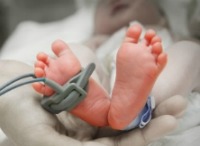 |
A Swedish research team evaluated more than three million individuals born between 1973 and 2008. The subjects were separated into two groups: those born in 1973 to 1986 (before the mandate of Sweden’s national screening program for retinopathy of prematurity), and those born in 1987 to 2008.
Within these groups, the researchers further classified subjects born at less than 28 weeks gestation as “extremely premature,” those born between 28 and 31 weeks gestation as “very premature” and those born between 32 and 36 weeks gestation as “moderately preterm.”
The researchers determined that extremely premature infants born from 1973 to 1986 were 19 times more likely to experience a retinal detachment during childhood, adolescence or young adult life than their full-term peers. Additionally, those born between 1987 and 2008 were nine times more likely to experience a retinal detachment.
The overall risk of retinal detachment in very premature infants fell significantly between the two groups—four times more likely for those in the older group (born 1973 to 1986) compared with three times more likely for those in the younger group (born 1987 to 2008). Interestingly, the researchers noted that moderately preterm infants in both groups were no more likely to experience retinal detachment than full-term infants.
“We may just be seeing the tip of the iceberg of late ophthalmic complications after preterm birth,” says lead author Anna-Karin Edstedt Bonamy, MD, PhD, pediatrician at Karolinska Institutet in Stockholm. “Not only does the risk of retinal detachment increase with age, but there has also been an increase in survival among people born prematurely since the 1970s. This provides opportunities for future research to address if the increased risk persists among those born prematurely as they age.”
Bonamy AK, Holmström G, Stephansson O, et al. Preterm birth and later retinal detachment: a population-based cohort study of more than 3 million children and young adults. Ophthalmology. 2013 Nov;120(11):2278-85.

